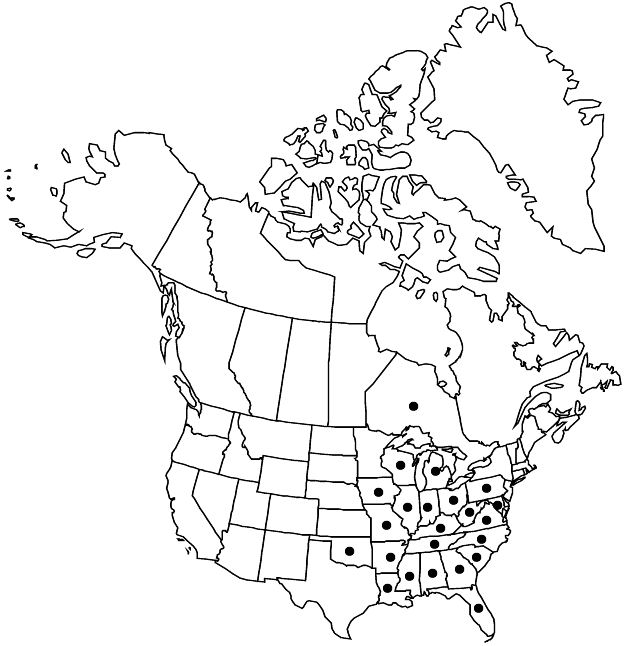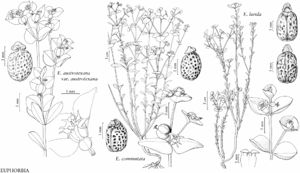Difference between revisions of "Euphorbia commutata"
Manual ed. 2, 389. 1856.
FNA>Volume Importer |
FNA>Volume Importer |
||
| Line 65: | Line 65: | ||
|publication year=1856 | |publication year=1856 | ||
|special status=Illustrated;Endemic | |special status=Illustrated;Endemic | ||
| − | |source xml=https://jpend@bitbucket.org/aafc-mbb/fna-data-curation.git/src/ | + | |source xml=https://jpend@bitbucket.org/aafc-mbb/fna-data-curation.git/src/f50eec43f223ca0e34566be0b046453a0960e173/coarse_grained_fna_xml/V12/V12_361.xml |
|genus=Euphorbia | |genus=Euphorbia | ||
|subgenus=Euphorbia subg. Esula | |subgenus=Euphorbia subg. Esula | ||
Revision as of 19:52, 16 December 2019
Herbs, usually biennial, occasionally annual, with taproot. Stems erect or ascending, decumbent and often branched near base, 10–40 cm, glabrous. Leaves: petiole usually 5–10 mm, 0–1 mm distally; blade usually oblanceolate to obovate, rarely ovate, 5–30 × 3–10 mm, base broadly attenuate, margins entire, apex usually obtuse to rounded, occasionally slightly retuse, surfaces glabrous; venation pinnate, midvein prominent. Cyathial arrangement: terminal pleiochasial branches (2–)3(–4), 1–3+ times 2-branched; pleiochasial bracts similar in shape and size to distal leaves; dichasial bracts distinct to basally subconnate, not imbricate, widely ovate, rhombic, or reniform, base cordate, rarely slightly perfoliate, margins entire, apex obtuse to rounded, mucronulate; axillary cymose branches 0–5. Cyathia: peduncle 0.5–1 mm. Involucre campanulate, 1.7–2.5 × 1.5–2.5 mm, glabrous; glands 4, crescent-shaped; 0.6–1 × 0.8–1.5 mm; horns divergent, 0.5–1.1 mm. Staminate flowers 9–15. Pistillate flowers: ovary glabrous; styles 0.9–1.3 mm, 2-fid. Capsules ovoid-globose, 2.5–3.2 × 3 mm, slightly lobed; cocci rounded to ± flattened, smooth, glabrous; columella 1.5–2 mm. Seeds white to gray, broadly oblong-elliptic to ovoid or nearly globose, 1.5–2 × 1.3–1.6 mm, strongly small-pitted; caruncle irregularly winglike, conic, 0.6–1 × 0.7–0.9 mm.
Phenology: Flowering and fruiting spring–summer.
Habitat: Bottomland and upland forests, bluffs and ledges, stream banks, glades, rarely fen margins.
Elevation: 50–1000 m.
Distribution

Ont., Ala., Ark., Fla., Ga., Ill., Ind., Iowa, Ky., La., Md., Mich., Miss., Mo., N.C., Ohio, Okla., Pa., S.C., Tenn., Va., W.Va., Wis.
Discussion
Selected References
None.
